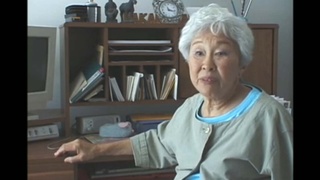Interviews
Memories of my infancy: Japanese 1, Japanese 2… (Spanish)
(Spanish) I was born on the San Nicolás Hacienda, where there was a place for the Japanese community, let´s call it “of the north,” one of many such places. I recall one in Cañete and then another called…well, I don’t remember, perhaps near Trujillo I believe, forgive me, Chiclayo, places where the Japanese settlement was near. The hacienda belonged to a Peruvian, naturally, and what he needed was cheap labor.
And I remember that one of the things that I considered amusing– I don’t know if you will also find amusing what I am about to tell you – I was a child who walked alone, and on Saturdays I remember going to the site where the workers received their pay; then they finished paying the Peruvian workers -- of course by their respective names, Luis Collantes, what I recall, and then when they began to pay the Japanese, they shouted out not a name but rather “Japanese number 1,” “Japanese number 2,” which made me laugh aloud because they [the Peruvian bosses] couldn’t say, for example, Shinki, Hitotuishi, these are difficult names for them to pronounce, and even worse to write. This is the strange thing that I saw when I was a child, I realize now.
Date: September 6, 2007
Location: Lima, Peru
Interviewer: Harumi Nako
Contributed by: Asociación Peruano Japonesa (APJ)







